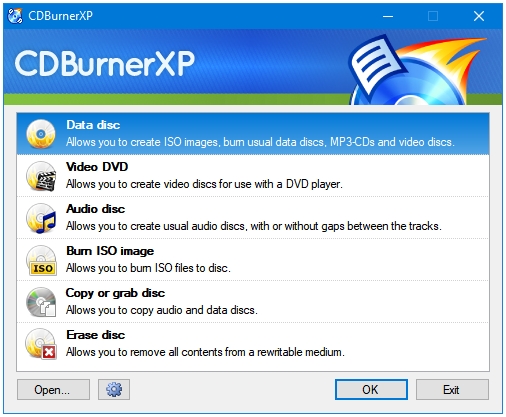

- #Server 2012 convert dvd to iso image install
- #Server 2012 convert dvd to iso image driver
- #Server 2012 convert dvd to iso image upgrade
- #Server 2012 convert dvd to iso image free
Run virt-install to boot the VM with the WS2012 installer ISO and VirtIO driver ISO attached attached, the disk set as a VirtIO disk and NIC attached to the default created virbr0.
#Server 2012 convert dvd to iso image install
The 15GB number chosen above as the disk size is arbitrary, the actual install only takes up just under 7GB so if you want to keep the image as small as possible then something close to that would be optimal. Qemu-img create -f qcow2 -o preallocation=full ws2012.qcow2 15g Make sure you have enabled IP forwarding in sysctl so that the VM will be able to access the networks when it comes online (if you want to copy scripts or other files onto it for example):Ĭreate a preallocated QCOW2 image in /tmp (I tried making a thin provisioned one and the Windows installer thought the disk size was zero) and set permissions so libvirt can access it: Make sure you install virt-installer and virt-manager:Īlternatively, if you don’t want to install the GUI virt-manager on to the computer, you can install that locally and connect to the computer over SSH with virt-manager.

Creating the image on CentOS 6 means that the image you create will be bootable everywhere.Īlong with this, you will need to have a Windows Server 2012 ISO accessible on the computer and product key (Aptira is a Microsoft SPLA partner), and and the Fedora signed VirtIO drivers. My advice is to use a CentOS 6 machine, as I found that images I created on newer distributions like Ubuntu 14.04 or CentOS 7 would not boot on RHEL/CentOS 6 machines due to changes in the version of QCOW2 used. I thought it would be useful to write up exactly what I did this time as a blogpost, so that others can hopefully use it as a resource and avoid the pain points that I had to go through (since Windows doesn’t use text based configuration files, making changes means booting the image, making the changes and reuploading, rather than simply mounting and modifying the image).įirst thing you will need is a computer capable of running KVM, with VT extensions enabled in the BIOS. To my further frustration, the available documentation on the internet for doing so is actually quite sparse and in some cases nonexistent. Unfortunately, no matter what I did, WS2012 just wouldn’t work correctly! After wasting a very frustrating day, I decided to rebuild an identical image from scratch in QCOW2 format to bypass the issue completely. Qemu-img convert -f vmdk ws2012.vmdk -O qcow2 ws2012.qcow2Īnd a bunch of variations of that. So I tried to convert the existing VMDK to a QCOW2 to file with:
#Server 2012 convert dvd to iso image upgrade
We originally ran this platform for our customer, Mercurial, on our VMware backed OpenStack region but as part of the upgrade we wanted to increase its capability to run our own KVM backed region as well. One thing we have been working on recently is upgrading our business intelligence platform, ADAPT.
#Server 2012 convert dvd to iso image free



 0 kommentar(er)
0 kommentar(er)
